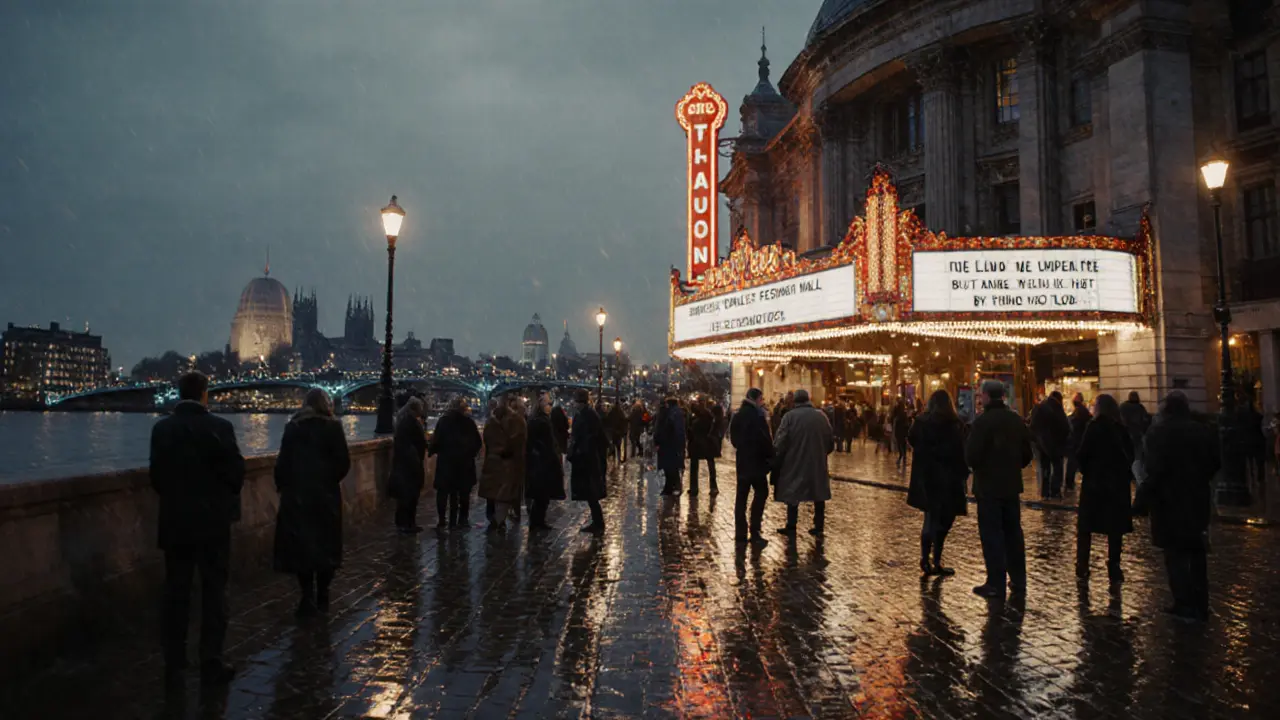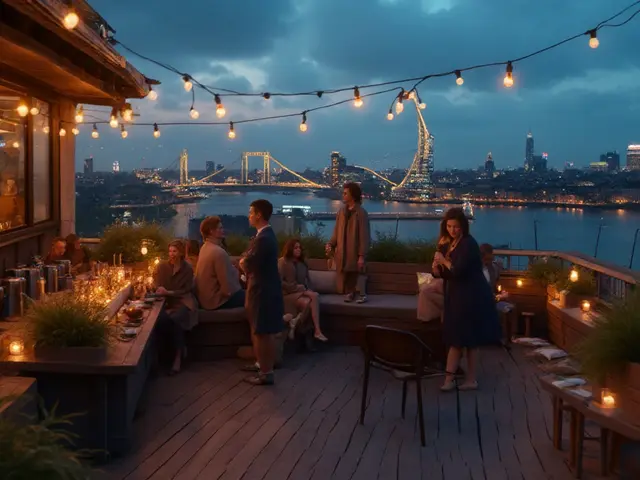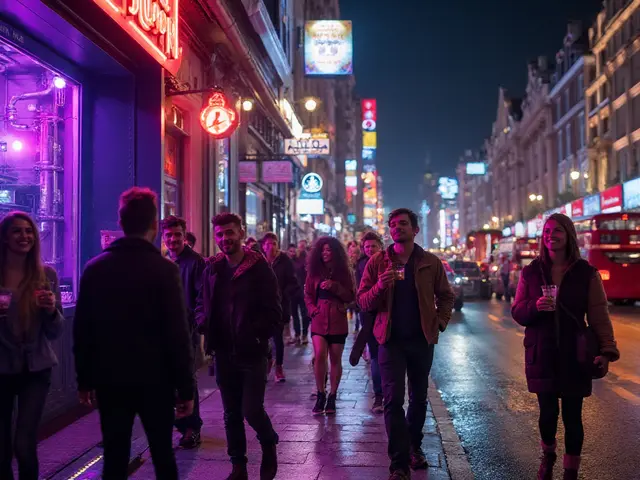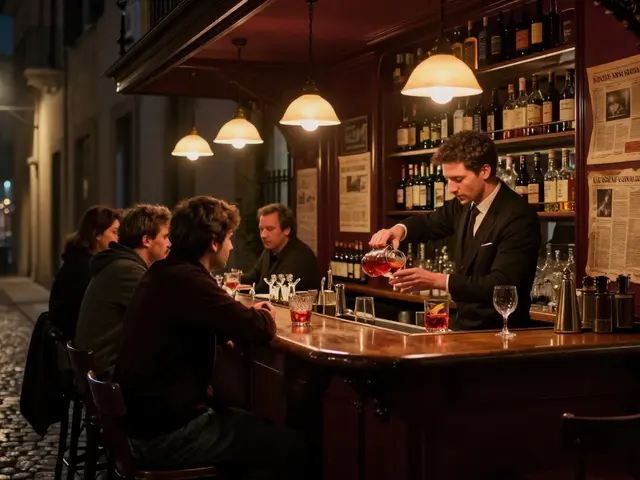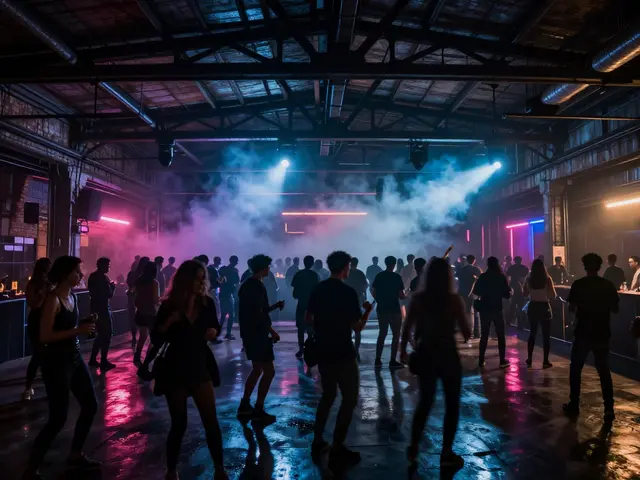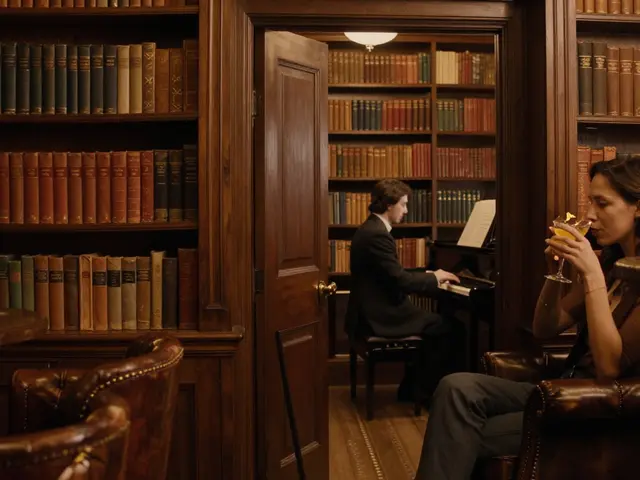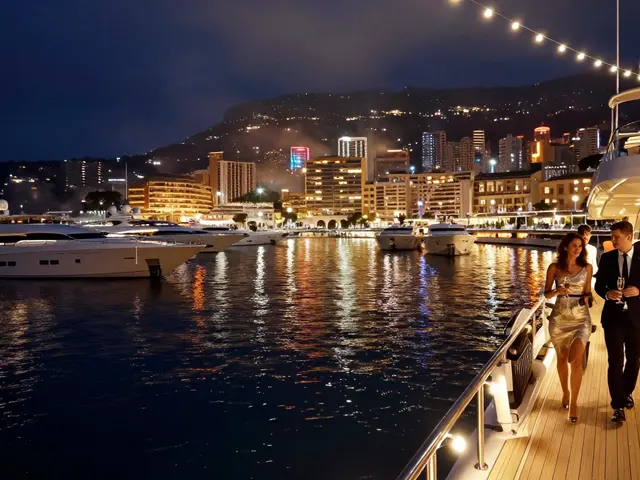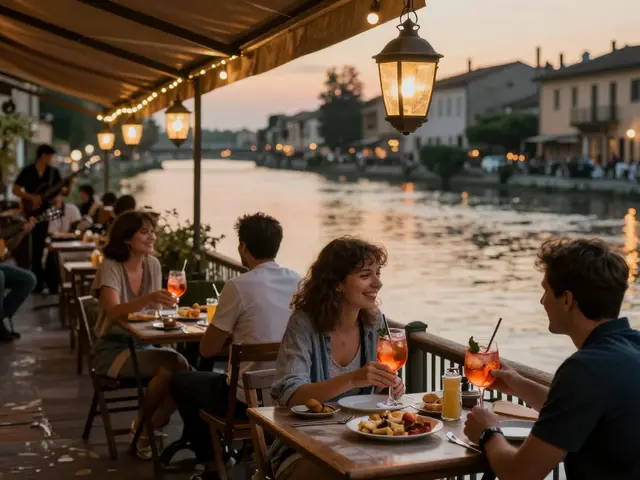London doesn’t just stay awake after dark-it comes alive with stories, sounds, and smells that echo centuries of art, music, and rebellion. If you’re not here for clubbing or cheap cocktails, but for the real soul of the city after midnight, you’re in the right place. This isn’t about flashy neon signs or bottle service. It’s about jazz clubs tucked under railway arches, poetry readings in 18th-century pubs, silent film nights with live piano, and theaters where the curtain goes up at 10 p.m. because that’s when the real audience shows up.
Where the Arts Don’t Shut Down at 11
The South Bank is the heartbeat of London’s cultural night scene. Walk along the Thames after sunset and you’ll see crowds spilling out of the National Theatre’s bar, still buzzing from the evening’s performance. The Royal Festival Hall doesn’t just host concerts-it turns into a social hub. On Thursdays, they open the doors for Live at the Hall, where emerging composers and experimental musicians play to standing-room-only crowds. No tickets needed. Just show up. Bring a coat. The air smells like rain and old books.
Just down the road, the Tate Modern’s Turbine Hall hosts After Hours every first Friday. It’s not a gallery opening. It’s a full-night immersion. Artists turn the space into interactive installations. A sound engineer might play field recordings from the Amazon while you sip mulled wine. A dancer performs inside a cage of hanging mirrors. You don’t just watch-you step into the art. The line to get in snakes around the building, but it moves fast. No reservations. First come, first served.
Hidden Jazz and Blues in the East End
Forget the tourist traps in Soho. The real jazz scene in London hides in basements and converted warehouses. Vortex Jazz Club in Dalston has been running since 1992. It’s small. The ceiling is low. The chairs are mismatched. But the music? Unmatched. You’ll hear Nigerian percussionists blending with Polish saxophonists, all backed by a London-born pianist who’s played with Courtney Pine and Yussef Dayes. Cover is £10. Drinks are £5. No one checks your ID unless you look 16. They care more about your listening than your outfit.
Down the street, The Jazz Café in Camden isn’t just a venue-it’s a cultural archive. Every Tuesday, they host Blues & Roots, where local musicians bring their grandparents’ records to reinterpret. One night, a 72-year-old singer from Jamaica performed a 1950s calypso tune with a beatboxer from Peckham. The crowd was half tourists, half locals who’ve been coming for 20 years. That’s the magic: history doesn’t stay in museums here. It breathes on stage.
Theater That Doesn’t Wait for the Matinee
London’s West End isn’t just for musicals. The Shakespeare’s Globe has been staging evening performances since 1997. But here’s the secret: their Summer Night Series runs until October. You can sit on the ground in the yard for £5. Bring a blanket. A flask of tea. Watch the actors perform under the stars. No seats. No headphones. Just the original language, the original stage, and the same audience that showed up in 1599.
For something more modern, head to The Old Vic. Their Midnight Matinees start at 11 p.m. on weekends. The plays are experimental-think one-person shows about climate grief or immersive theater where you walk through a recreated refugee camp. The audience is quiet. Thoughtful. People leave in silence. You’ll see them on the tube afterward, still staring into space. That’s the point.
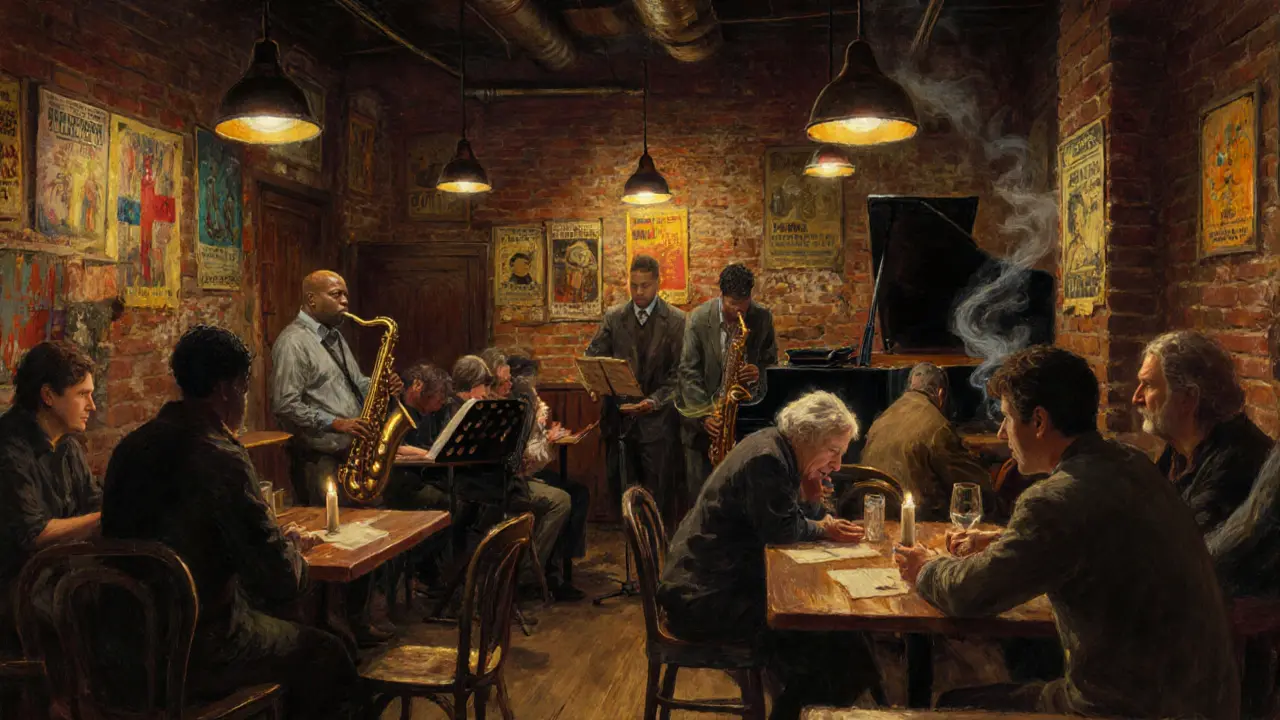
Bookshops That Stay Open Past Midnight
Most people think bookstores close at 8. Not in London. Daunt Books in Marylebone stays open until midnight on Fridays and Saturdays. It’s not just books-it’s events. On the third Thursday of every month, they host Books & Brews. Authors read unpublished work. Poets perform. A local brewery brings out a limited-edition IPA named after the author on stage. Last month, a Nigerian-British writer read a chapter from her novel about a woman who dreams in Yoruba. The room was silent. Then someone whispered, “I’ve never heard that before.”
Down in Peckham, Rye Lane Bookshop does something wild: they turn the back room into a silent reading lounge after 9 p.m. No phones. No talking. Just chairs, lamps, and 2,000 books you can’t buy. You sit. You read. You leave. No receipt. No pressure. It’s the only place in the city where silence is the main attraction.
Where the Music Isn’t Played-It’s Made
London’s underground music scene isn’t about DJs. It’s about community. The Jazz Cafe and Vortex are just the tip. Look deeper. In Hackney, The Black Cultural Archives hosts Sound & Soul every other Friday. It’s a live recording session where musicians improvise based on oral histories from Caribbean elders. The tracks are uploaded to a free archive. No streaming royalties. Just access. You can download them. Play them. Share them. The archive has over 12,000 recordings now. All made in London.
On the other side of the city, in Walthamstow, Walthamstow Assembly turns its courtyard into an open-air studio every Saturday night. Local students from Goldsmiths University bring homemade instruments-steel drums made from oil drums, string instruments built from bicycle parts. They play until 2 a.m. No stage. No lights. Just a mic, a speaker, and a circle of people listening. Someone once told me, “This is where London’s future music is born. No label. No deal. Just sound.”
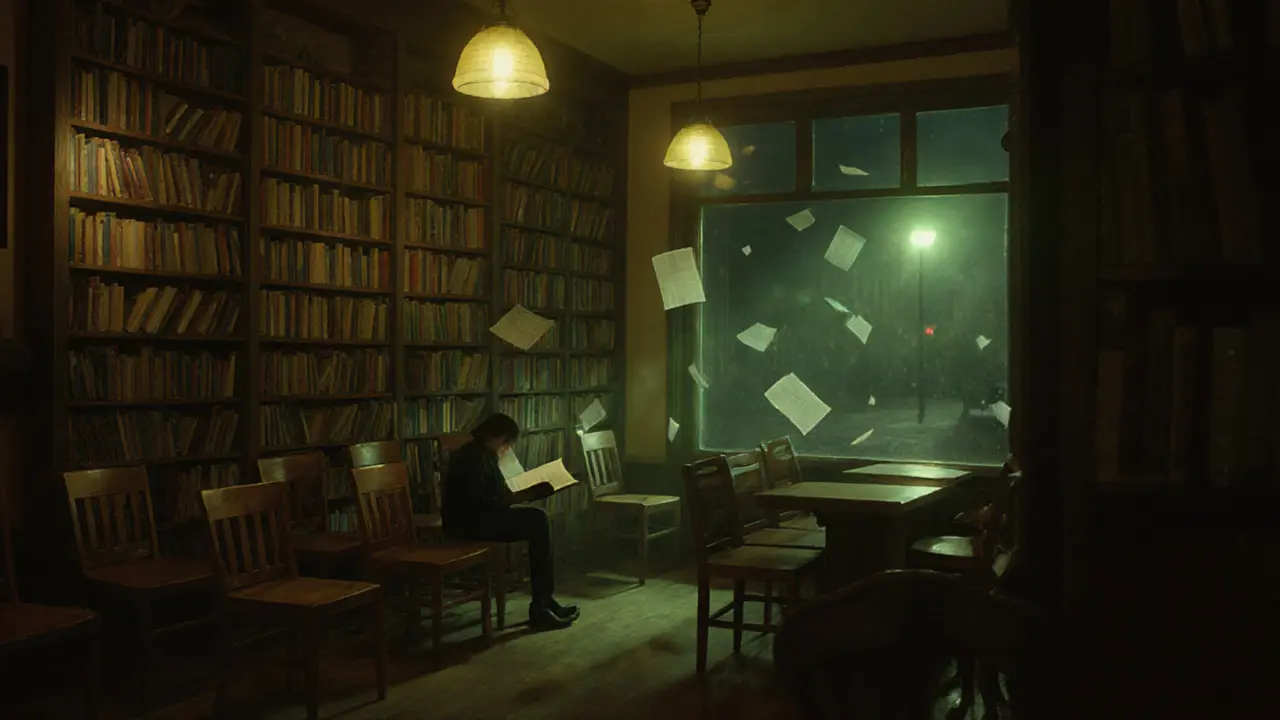
What You Won’t Find in the Tourist Brochures
You won’t see these spots on Instagram. You won’t find them on Time Out’s “Top 10 Nightlife Spots.” They don’t have Instagram accounts. They don’t need them. The word spreads through word of mouth. A friend says, “You gotta go to this place.” You go. You sit. You listen. You leave changed.
There’s no velvet rope. No cover charge over £15. No one asks for your name on a list. The people who run these places aren’t entrepreneurs. They’re archivists. Curators. Keepers of the quiet flame. They don’t care if you’re rich or famous. They care if you’re present.
That’s the real culture of London nightlife. Not the glitter. Not the bottles. Not the selfies. It’s the moment you realize you’re sitting next to someone who just heard a poem that made them cry-and you didn’t say a word, but you knew exactly what they felt.
Is London nightlife safe for culture seekers at night?
Yes, but it depends on where you go. The cultural spots mentioned-like the South Bank, Vortex Jazz Club, and Daunt Books-are in well-lit, walkable areas with high foot traffic. Stick to places with clear entrances, visible staff, and local crowds. Avoid isolated alleyways, even if they look “quirky.” Most venues have security, but they’re there to protect the art, not just the guests. If you feel uneasy, leave. Trust your gut. London’s cultural night scene thrives on openness, not danger.
Do I need to book tickets for cultural nightlife events in London?
Sometimes, but not always. Major venues like the National Theatre or the Old Vic require tickets. But many of the most authentic experiences-like Tate Modern’s After Hours, Vortex Jazz Club, or Walthamstow Assembly’s open-air sessions-are walk-in only. Always check their websites the day before. Some events sell out, but many don’t. The best rule? Show up 30 minutes early. You’ll get a good spot, and you might catch the staff handing out free tea or snacks.
What’s the best way to get around London at night for cultural spots?
Take the Night Tube. It runs Friday and Saturday nights on the Central, Jubilee, Northern, Piccadilly, and Victoria lines. It connects most cultural zones: South Bank, Camden, Dalston, and Walthamstow. Buses also run 24/7 on major routes. Avoid taxis unless you’re going far-many cultural spots are within walking distance of Tube stations. Walking is part of the experience. You’ll stumble on street performers, hidden murals, or a pop-up poetry stall you didn’t know existed.
Are these venues expensive?
Not at all. Most cultural events cost under £15. Many are free. Tate Modern’s After Hours? Free. Vortex Jazz Club? £10. Daunt Books’ Books & Brews? Free entry, drinks from £4. Even Shakespeare’s Globe yard seats are £5. You’re not paying for luxury-you’re paying for access. And in London, access to art shouldn’t cost a fortune. If you see a £40 cover charge for a poetry reading, walk away. That’s not culture. That’s a trap.
When is the best time of year to experience London’s cultural nightlife?
Autumn is the sweet spot. September through November is when the city shifts from summer festivals to indoor cultural programming. The weather cools, but the energy heats up. The South Bank’s outdoor events run until October. The Old Vic’s Midnight Matinees start in October. Jazz clubs bring in new seasonal lineups. And bookshops launch their winter reading series. You’ll get fewer crowds, better weather for walking, and more intimate shows. Skip summer-it’s packed with tourists. Skip winter-it’s too cold for outdoor spaces. Autumn? Perfect.
What to Do Next
Start tonight. Pick one spot. Don’t plan a whole night. Just go to one place. Walk in. Sit down. Listen. Let the space take you. London’s culture doesn’t need a tour guide. It just needs you to show up.

